Recreating the Country blog |
|
- becoming wild in isolation. This month, botanical names starting with A 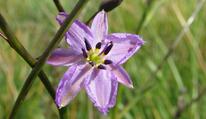 The scented Chocolate Lily flower The scented Chocolate Lily flower Last week we started our nature adventure and name challenge with the amazing Chocolate Lily. Arthropodium strictum and three of its close relatives that are all sweet scented and edible. Click here to read about them. Its exciting planting some of our wonderful natural heritage in your own garden. Then you can see millions of years of evolution going through its annual life-cycle where you can appreciate it every day How did you go with the first tongue twister botanical name? I find botanical names have a rhythm that helps me remember them. Say them over to yourself a few times to hear the 'flow' of the words. There is a poetic beauty in them that you will find The next amazing indigenous plant is another ground level plant with a close cousin that is a familiar shrub, though you may not realise it yet. I think of this ground-layer plant as a very useful groundcover. It's a saltbush that isn’t a bush and it has all the toughness, hardiness and the usefulness of the saltbush family. Berry or Creeping Saltbush, Atriplex semibaccata How to say it. At – trip – lex and run those syllables together. Semi offers little challenge, and as you think of the Magna Carta, say bac – cata and you’ve got it. 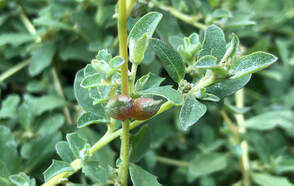 Two ripening fruit on a Berry Saltbush Two ripening fruit on a Berry Saltbush Its ancient origins are all Latin - Salsa anyone Pliny the Elder first used the Latin word atriplex in his remarkable book ‘Natural History’ published in AD 77. He was describing an edible mountain spinach and other related useful plants like amaranth. The Latin word baccata = bearing berries. The scientific name literally means a spinach like plant with berries. It follows that the Berry Saltbush is a member of the amaranth family as are all the saltbush species. 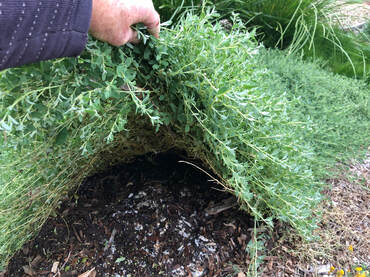 The Berry Saltbush is a living fire retarding mulch The Berry Saltbush is a living fire retarding mulch Some human context The berries on the Berry Saltbush can be eaten fresh or made into jam if you have the inclination and the time as they are very small. They are a little sweet with a salty note. You know its diamond shaped berries are ripe when they turn red. To add to its potential, its leaves are high in protein and can be grazed by sheep. As it grows it hugs the ground and can spread to 1m across within twelve months. Its grey foliage is an attractive feature that provides good contrast in the home garden. If you're looking for a dense fast growing drought tolerant groundcover, its hard to find a match for this plant. Like other members of the saltbush family it's higher leaf salt levels make it less flammable. This feature makes it very useful in fire prone country locations where dry straw mulch and wood chips can become a fire hazard. The Berry Saltbush is therefore very valuable as a fire retardant living mulch. Here is an interesting observation and link from Stuart McCallum, activist, conservationist and long time Friend and protector of the Bannockburn Bush. This Berry Saltbush has managed to colonise our VicRoads/Golden Plains replanting site on Harvey Rd. 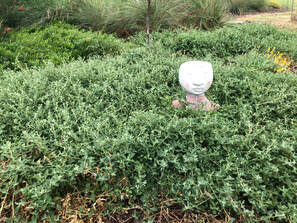 You never know what you'll find living in a Berry Saltbush You never know what you'll find living in a Berry Saltbush Nature notes The Berry Saltbush provides dense cool habitat for insects like springtails as well as skinks and frogs. Imagine your well fed garden Bluetongue lizzards safe in a home that provides a balanced diet of protein rich insects and vitamin rich fruit for most of the year. Small ground feeding birds like the Superb Fairywren will pick through the grey foliage to find insects and berries as well. 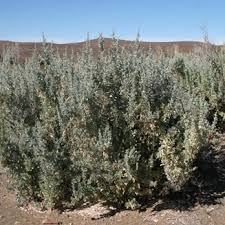 A close relative - Atriplex nummularia Its bushy close cousin that I mentioned earlier is Oldman Saltbush, Atriplex nummularia. You may know it as the plant that saltbush lamb is grown on. Nummularia is pronounced numb – mule – area. It earned its Latin name because its circular leaves are like a Roman coin, nummus = coin Nature notes & human context Both its leaves and seeds can be eaten, the latter being used as a protein rich food by Indigenous Australians. Read more about its food potential here This bush grows to about 2m x 2m and is planted on farms in hedgerows to provide drought proof nutritious food for grazing animals. It also provides them with dense wind shelter. Other animals like small birds and Bluetongue lizards have been recorded using the dense habitat it provides for nesting and for shelter. ... and their easy to propagate Both atriplex species are easy to propagate from seed. It’s as simple as collecting the mature berries and sowing them into potting mix (or garden soil). They’ll germinate within a few weeks. When they are large enough to handle, transplant into small pots to grow them on for the garden or the back paddock. See this link to the NSW Department of Primary Industries for more information on Oldman Saltbush as stock fodder. Next week we will venture into the very large genus of Acacias with two of my favourites - a beautiful small shrub and a longlived graceful small tree.
11 Comments
Wendy Moore
9/5/2020 01:42:08 pm
My sister has lived for decades on remnant Basalt Plain grassland on violently cracking basalt clays between Geelong and Lara. Over the past year or so the saltbush - ruby & nodding - have gone mad and cover most of the available ground. It is hard to walk without standing on it. Rhagodia sp is also popping up. It is great to see.
Reply
Steve
14/5/2020 11:34:10 am
Thanks for those useful insights Wendy. The saltbushes have the big advantage of being transported often long distances by birds eating the berries. The local skinks will be loving all the shelter that these groundcovers are providing.at your sisters
Reply
Kate Simpson
9/5/2020 08:54:13 pm
Love those little berries! These plants seem to grow overnight - fabulous ground cover
Reply
Steve
14/5/2020 11:38:24 am
Hi Kate,
Reply
Wendy Moore
10/5/2020 10:16:38 am
Sad Ignorance
Reply
Steve
20/5/2020 04:01:45 pm
Hi Wendy,
Reply
vivien George
14/5/2020 10:18:09 pm
Steve, a great article on the Acacias. Can you clarify again which Wattle Seeds are safe to eat. I was informed that there is only one and the other may contain arsenic. regards
Reply
Steve
20/5/2020 04:45:43 pm
Hi Vivien,
Reply
Dan
29/8/2020 04:04:42 pm
Hey everyone! Looking to get some of the creeping and different species for a bit of versatility on a grazing block up north. We bought a heap of de nock, with mixed results and looking to expand the plantings. Where can I get large numbers of plants sent interstate, does anyone have any contacts? Thanks in advance!
Reply
Steve
30/8/2020 09:41:51 am
Hi Dan,
Reply
Leave a Reply. |
Click on the image below to discover 'Recreating the Country' the book.
Stephen Murphy is an author, an ecologist and a nurseryman. He has been a designer of natural landscapes for over 30 years. He loves the bush, supports Landcare and is a volunteer helping to conserve local reserves.
He continues to write about ecology, natural history and sustainable biorich landscape design. 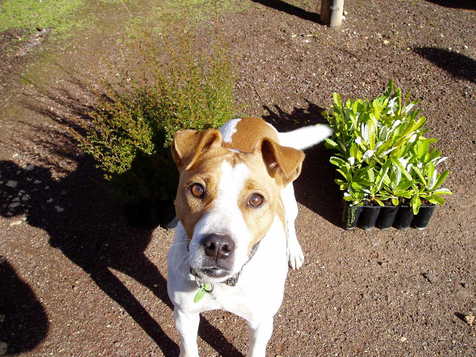
|
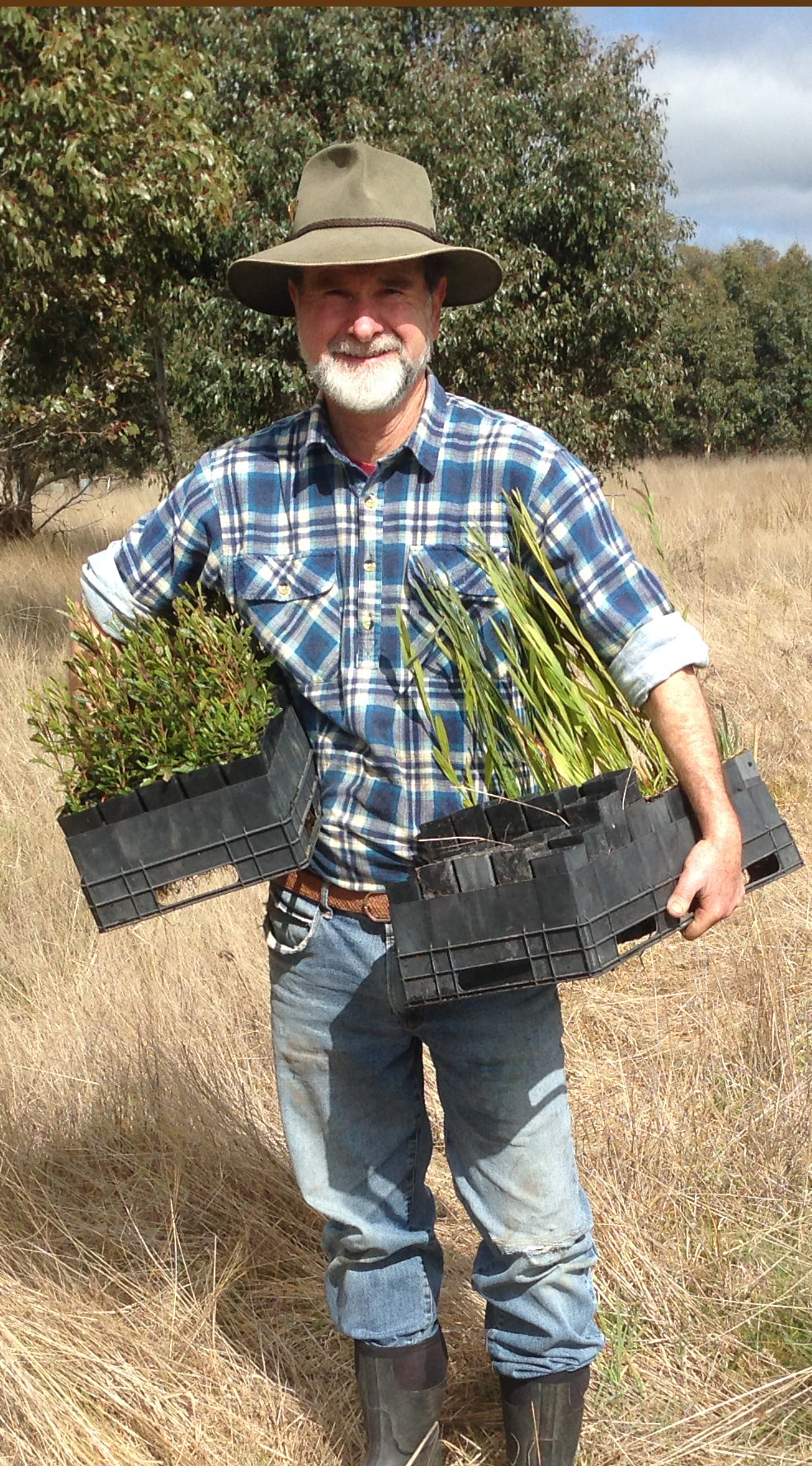

 RSS Feed
RSS Feed
